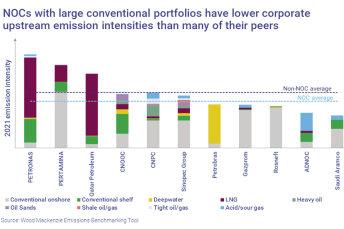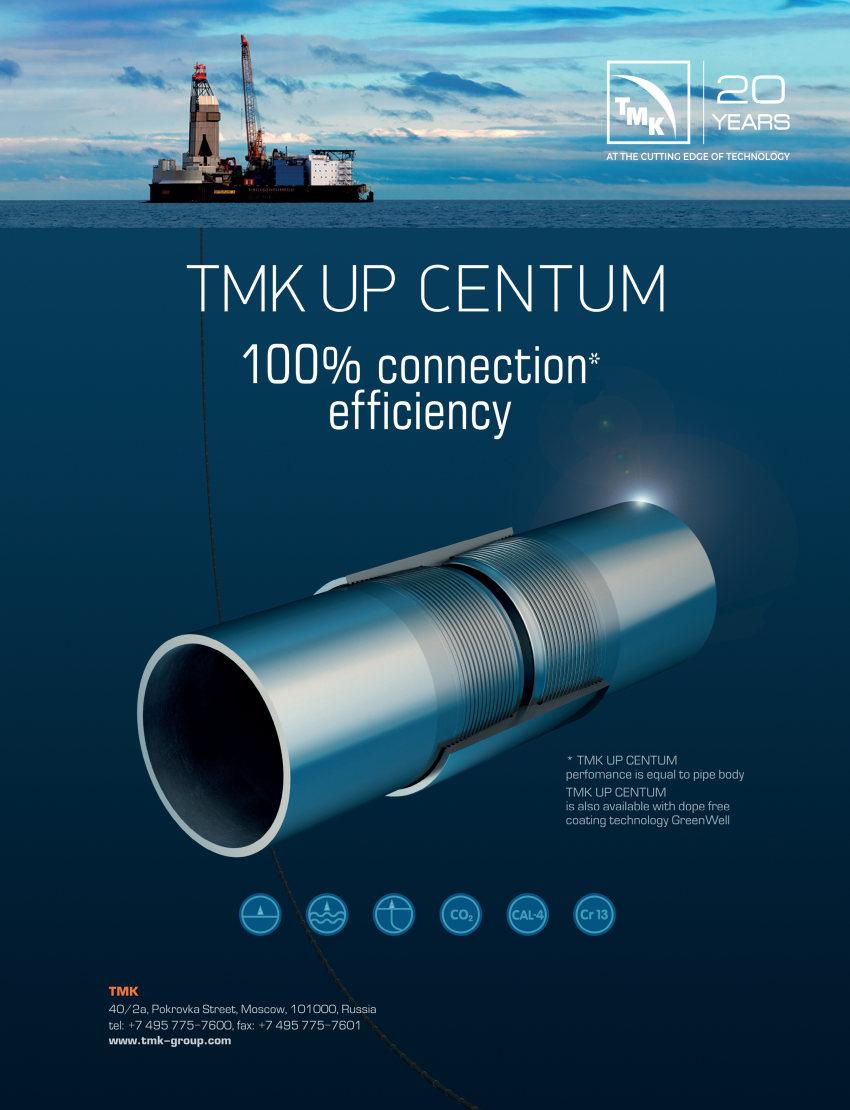
3 minute read
The role of NOCs on the road to net zero
THE ROLE OF NOCS IN THE ROAD TO NET ZERO
Liam Yates (senior analyst, Middle East upstream) and Kristina Beadle (analyst, carbon research) at energy consultants Wood Mackenzie discuss whether NOCs will follow the lead of the majors in setting ambitious emissions reduction targets.
NOCS DOMINATE THE global oil and gas space – producing 50% of liquids and 48% of gas in 2021. And as some IOCs diversify away from oil and gas as part of their energy transition strategies, this is only likely to increase.
But high levels of production result in high absolute greenhouse gas emissions from upstream activities. Of the almost 100 companies included in our Emissions Benchmarking Tool, NOCs account for nearly half of the top 20 upstream emitters (scope 1 and 2) in 2021, and take the top two spots.
The primary role of many NOCs is to generate revenue and maximise resource extraction for oil- and gas-rich government shareholders – and they often have access to some of the best quality and lowest cost resources. And some governments are reliant on oil revenues for over 90% of government income. So, efforts to reduce emissions, or carbon taxing, are a significant threat.
Despite high absolute emissions, the 11 NOCs covered in our Emissions Benchmarking Tool fare better on an emission intensity basis. Those with large, long-life conventional portfolios, such as Saudi Aramco and Rosneft, have lower corporate upstream emission intensities than many of their peers, while those heavily weighted to LNG have a high scope 1 and 2 emission intensity
The trend for carbon policy (such as carbon taxes) and emissions reduction targets is growing. But the risk to many NOCs is low, at least for domestic operations, with most governments unlikely to inflict carbon policy that will have an impact on domestic hydrocarbon revenues. However, there is growing global pressure for all countries to set emission reduction targets and policy, which may affect imported products as well as domestically produced products. There is also mounting pressure from investors for companies to reduce operational emissions.
High production and absolute emissions expose NOCs to more absolute value at risk if carbon taxes are implemented, although generally lower emissions intensity and high free cashflow means many NOCs could tolerate extremely high carbon taxes. Of the 11 NOCs analysed, the average carbon tax for upstream company cashflows to break even at a 10% discount rate is over US$400/tonne.
The NOCs are behind the curve when it comes to emissions reduction targets, with only three having set net zero ambitions: PetroChina, PETRONAS and Sinopec. Many have less ambitious, shortterm targets and a handful, including Saudi Aramco and Gazprom, are yet to set any corporate targets. Several NOCs have ambitious production growth targets which will make any absolute emissions reductions challenging.
Last year saw a shift in focus for the European Majors, with all announcing targets to strive for ambitious Scope 1 and 2 emissions reduction targets and carbon neutrality by 2050.
So, are NOCs next? Increasing stakeholder and investor pressure, the growing marketability of low-carbon products and the physical impacts of climate change are all motivating forces.
And emissions reduction could evolve into lucrative business opportunities, with many of the NOCs already well placed to take advantage. So-called “green LNG”, carbon capture utilisation and storage, as well as more low-hanging fruit such as reducing flaring and fugitive emissions are all under active consideration by several NOCs.
The year 2021 could be a pivotal year, with COP26 in Glasgow in November tipping the balance towards the adoption of further emissions reductions targets. Setting a net zero target may not be achievable or desirable for all NOCs, but those with first mover advantage may reap the rewards of sustainability.









